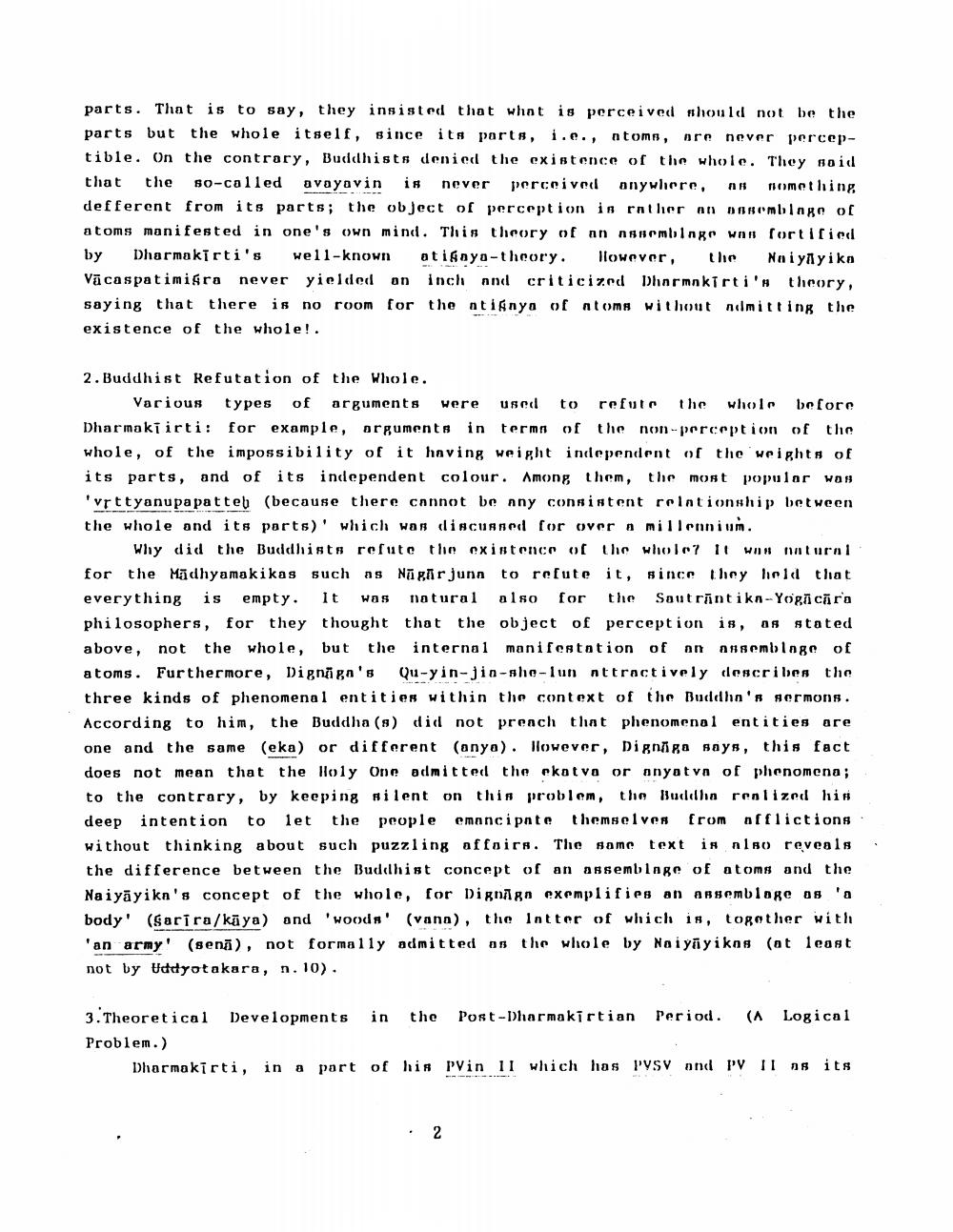________________
parts. That is to say, they insisted that what is perceived #hould not be the parts but the whole itself, since its parts, i.e., ntoms, are never perceptible. On the contrary, Buddhists denied the existence of the whole. They said that the so-called avayavin is never perceived anywhere, au nomething defferent from its parts; the object of perception in rnther an Dombingo of atoms manifested in one's own mind. This theory of an nsitomingo want fortifica by Dharmakirti's well-known atignyo-theory. However, the Naiyilyiko Vācaspatimigra never yielded an inch and criticized Dhormnkirti': theory, saying that there is no room for the ntifnya of atoms without admitting the existence of the whole!.
2. Buddhist Refutation of the whole.
Various types of arguments were used to refut the whole before Dharmakīirti: for example, orguments in terms of the non-prrception of the whole, of the impossibility of it having weight independent of the weights of its parts, and of its independent colour. Among them, the most popular won
vrttyanupa patteb (because there cannot be any consistent relationship between the whole and its parts)' which was discurget for over a millennium.
Why did the Buddhists refute the existence of the whole? 1 WOW anturni for the Madhyamakikas such as Nagarjuna to refute it, since they lind that everything is empty. It was natural also for the Soutrintikn-Yogācāra philosophers, for they thought that the object of perception is, as stated above, not the whole, but the internal manifestation of an angembange of atoms. Furthermore, Dignāgn's Qu-yin-jin-she-run nttractively describes the three kinds of phenomenal entities within the context of the Buddha's sermons. According to him, the Buddha (9) did not preach that phenomenal entities are one and the same (eka) or different (anyo). However, Dignago says, this fact does not mean that the Holy One admitted the ekotva or anyat va of phenomena; to the contrary, by keeping silent on this problem, the Buddha realized his deep intention to let the people emancipnte themselves from afflictions without thinking about such puzzling affairs. The same text is also reveals. the difference between the Buddhist concept of an assemblage of atoms and the Na iyāyika's concept of the whole, for Dignagn exemplifies an assemblage osa body' (Sarira/kāya) and 'wood' (vann), the Intter of which is, together with 'an army' (senā), not formally admitted as the whole by Naiyiyikog (at least not by Vidyotakara, n. 10).
3. Theoretical Developments in the Port-Dharmakirtian period. (^ Logical Problem.)
Dharmakirti, in a part of his Pin 11 which has P'YSV and PV 1 08 its
•
2




